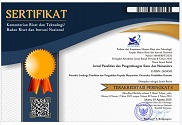Kesantunan dalam Ritual Pernikahan Masyarakat Hindu-Bali; Kajian Etnopsikolingustik Religius
DOI:
https://doi.org/10.23887/jppsh.v4i1.24445Keywords:
politeness strategies, culture, balinese Marriage, psychologyAbstract
The study which is descriptive qualitative in nature, aims to investigate preference of politeness strategies by Balinese Hindu-community in traditional marriage ritual. Data was collected using interview and observation methods. Based on the results of data analysis, this research shows that the form of politeness that arises can be seen in terms of place, time, to the leaders of the people, during preparation, implementation, disclosure of the relationship with the Almighty, and after the completion of the ritual. The different forms of politeness that emerge can be seen from the use of Balinese in various levels which are adjusted to the social distance and speech situation. Besides being seen from the use of language, linguistic politeness is also evident from the attitude, intonation, and tone of the speaker. The difference in the form of politeness is intentionally raised to cause certain psychological impacts on the interlocutor.
Downloads
Published
Issue
Section
License
Authors who publish with the Jurnal Penelitian dan Pengembangan Sains dan Humaniora agree to the following terms:
- Authors retain copyright and grant the journal the right of first publication with the work simultaneously licensed under a Creative Commons Attribution License (CC BY-SA 4.0) that allows others to share the work with an acknowledgment of the work's authorship and initial publication in this journal.
- Authors are able to enter into separate, additional contractual arrangements for the non-exclusive distribution of the journal's published version of the work (e.g., post it to an institutional repository or publish it in a book), with an acknowledgment of its initial publication in this journal.
- Authors are permitted and encouraged to post their work online (e.g., in institutional repositories or on their website) prior to and during the submission process, as it can lead to productive exchanges, as well as earlier and greater citation of published work. (See The Effect of Open Access)









